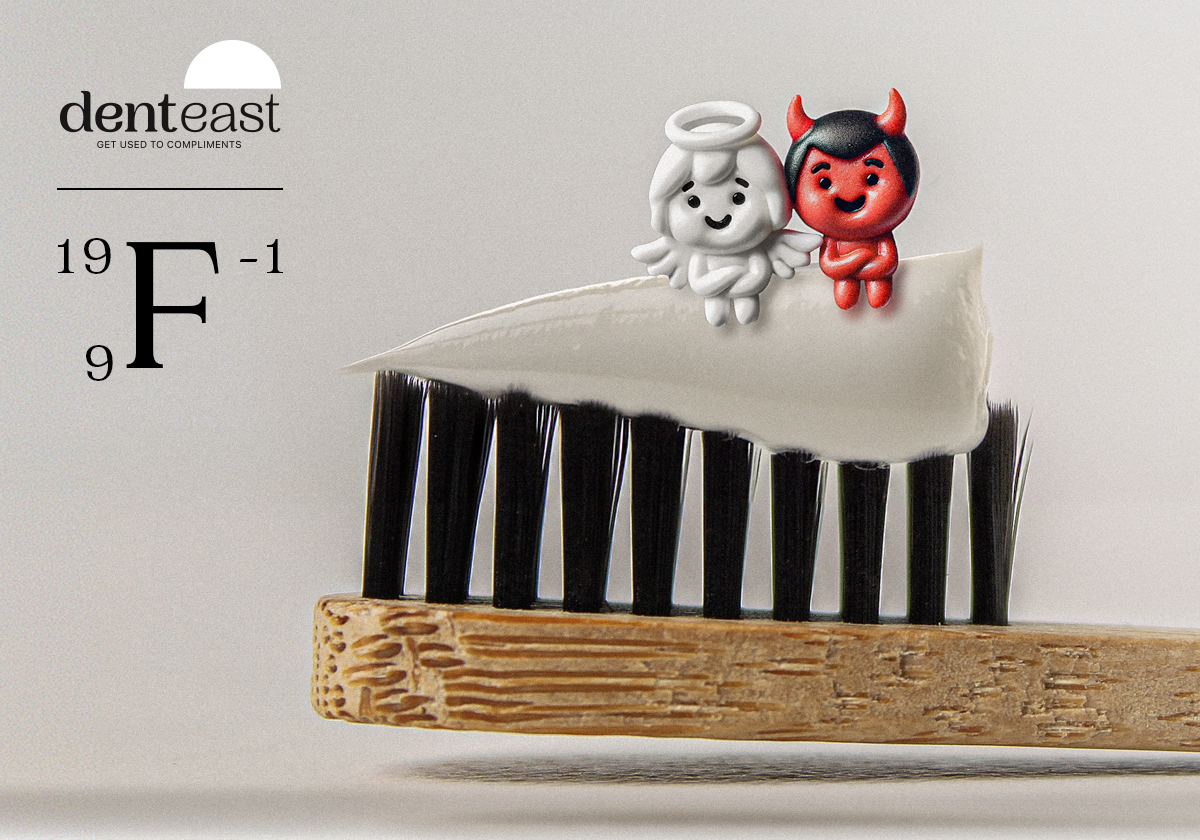In the world of dental care, few topics stir as much debate as F (Fluoride:) Often hailed as a hero in tooth decay prevention, yet sometimes mistakenly villainized, fluoride’s role in oral health is a fascinating tale of science, history, and misconceptions.
In this post, we’ll dive deep into the world of fluoride – exploring its history, chemical structure, types, uses, benefits, and the few contraindications. Let’s embark on a journey to uncover the truth about this dental champion!
A Brief History of Fluoride in Dentistry
Fluoride’s journey in dentistry began in the early 20th century when scientists noticed lower rates of tooth decay in areas with naturally occurring fluoride in water.
The journey began when a young dentist, Dr. Frederick McKay, moved to Colorado Springs in 1901 and noticed a peculiar trend: many locals had brown-stained teeth. Intrigued, McKay embarked on a quest to understand this phenomenon.
After years of investigation, he discovered that the cause was high levels of naturally occurring fluoride in the local water supply. Although the staining, later termed ‘dental fluorosis,’ was aesthetically displeasing, McKay made a groundbreaking observation: these fluoride-exposed teeth were surprisingly resistant to decay. This finding piqued the interest of the dental community and led to further research.
In the 1930s, the National Institute of Dental and Craniofacial Research conducted a detailed study in several cities with different fluoride concentrations in water. They conclusively found that fluoride indeed significantly reduced the prevalence of tooth decay.
This pivotal research laid the foundation for the introduction of fluoride into public water supplies, a move that has since been heralded as one of the most significant public health achievements of the 20th century. The early use of fluoride, initially met with skepticism, gradually gained acceptance as its benefits in preventing tooth decay became evident, revolutionizing dental care and significantly improving oral health globally.
Understanding Fluoride’s Chemical Nature
Chemically, fluoride is a negative ion of fluorine (F-), one of the most reactive elements. In its ionized form in various compounds, fluoride is readily absorbed by the body and used in numerous health applications.
Types of Fluoride
There are several types of fluoride used in dental care:
- Sodium Fluoride (NaF): Common in toothpaste and mouth rinses.
- Stannous Fluoride (SnF2): Known for both anti-cavity and anti-gingivitis properties.
- Acidulated Phosphate Fluoride (APF): Often used in professional fluoride treatments.
The Heroic Uses and Benefits of Fluoride
- Prevention of Tooth Decay: Fluoride’s superpower lies in its ability to strengthen tooth enamel and make it more resistant to acid attacks from bacteria in the mouth.
- Remineralization: It aids in remineralizing small imperfections on the tooth surface, reversing early signs of cavity formation.
- Cost-Effective Dental Care: Fluoridation of public water supplies is considered one of the most cost-effective methods of cavity prevention.
- Benefits for All Ages: From children to adults, fluoride benefits people of all ages by fortifying teeth against decay.
Debunking Myths: The Contradictions of Fluoride
Despite its benefits, fluoride has its share of myths and misconceptions. Here’s the truth:
- Fluorosis: Excessive fluoride during childhood, when teeth are developing, can lead to dental fluorosis, a condition marked by mild discoloration of teeth. This is why it’s important to monitor fluoride intake in young children.
- Toxicity at High Levels: Like many substances, fluoride can be harmful in large quantities, but the amounts used in dental products and water fluoridation are safe and regulated.
- In extreme cases, excessive fluoride intake over prolonged periods can lead to skeletal fluorosis, affecting bones and joints.
However, it’s important to distinguish between high-dose exposure and the controlled, minimal amounts used in community water fluoridation and dental products. The latter are carefully regulated and widely considered safe by major health organizations worldwide. The apprehension about fluoride’s toxicity often arises from misunderstanding its dosage and impact.
Scientific consensus holds that when used appropriately, fluoride’s benefits in preventing tooth decay far outweigh its risks. Nonetheless, this ongoing debate underscores the importance of adhering to recommended guidelines for fluoride use to ensure its safe and effective application in dental care.
Key Takeaways
- A Smile’s Guardian: Fluoride is a dental hero, playing a crucial role in maintaining oral health and preventing tooth decay.
- Not a Villain: The negative perceptions of fluoride often stem from misinformation. When used correctly, fluoride is safe and beneficial.
Conclusion
Fluoride stands as a testament to the power of scientific discovery in enhancing public health. From its early beginnings to its widespread use today, fluoride remains a key player in the fight against tooth decay. So, is fluoride a villain or a hero? The answer is clear – fluoride is a hero in the world of dentistry, tirelessly working behind the scenes to protect and strengthen our smiles.
Remember, a well-informed decision is the foundation of good oral health. If you have concerns or questions about fluoride, feel free to reach out to us at Denteast. Let’s keep those smiles healthy and sparkling!
Best,
Dr. Sunny and the Denteast team



